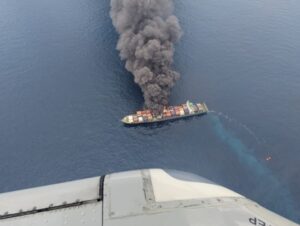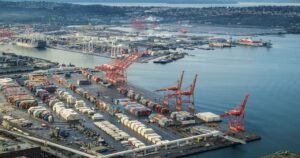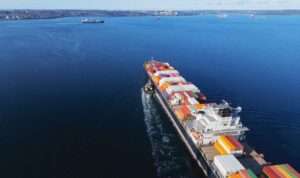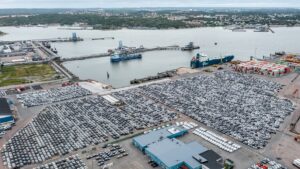Maritime Strategies International (MSI), a leading independent research and consultancy firm, has announced that container lines have shifted their focus towards alliance structures for operational efficiency, rather than relying on large scale technological innovation.
The lines’ profile as technology innovators is well known, having rewritten the rule book on economies of scale, adopting alternative marine power and electronic-controlled fuel-injection engines that support slow steaming.
However, alliance structures within the industry may challenge the speed and shape of technological innovation in future.
With container lines continuing to seek cost savings, Jamie Seneviratne Analyst for MSI said that any equipment manufacturer looking to drive innovation must consider how vessels employing their systems can be compatible with other ships operated in the same alliance structure.
He said: “Historically, container shipping has seen some of the most pioneering uses of technology and new vessel designs, with bold movements towards innovation.
“Pushing the bounds of technology were independent owners who built a series of containerships designed with specific objectives in mind. These ships were built with an eye on sustainable development and efficiency in ways many others had not considered.”
Despite these achievements, the drive for innovation in container shipping has proceeded at an uneven pace, with technical innovations such as eco-ships and new vessel sizes, have been followed by an increase in ordering.
Technical Paper: Unprecedented Alliances: Tackling the Biggest Alliances
However, the dynamics of the new alliance structures within the industry may challenge the speed, and shape of technological innovation.
Nearly eight years into the container industry crisis, the recent intensification of alliances marks something of a step-change in the attitudes of key players.
Rather than focussing on technical innovation – beyond the increase in slot capacity that has seen vessel sizes increase to a new ceiling – the industry seems to have settled on alliances as the primary means to achieve this, says Seneviratne.
Seneviratne said: “The containership industry is in a state of transition and whilst some liner companies and owners are trying to embrace and drive change, others have struggled to shift their business model.
“Liner companies need to find a way to consolidate their operations sufficiently to gain economies of scale, achieve cost synergies and eventually obtain some degree of pricing power.”
Within this context, any distinct design features or technical innovations on those ships must be compatible in terms of operating alongside a string of other vessels, potentially of different designs.
Any technology innovation which makes it easier to operate joint services would be highly valuable, but to do this it would have to satisfy design constraints from multiple owners. As such, it represents both a challenge and an opportunity for technology innovators within the industry.








